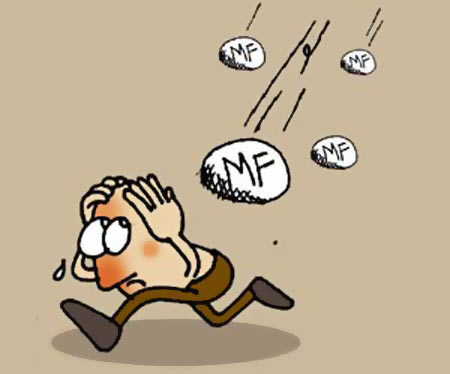 | « Back to article | Print this article |
The 10-minute test for finding the RIGHT mutual fund
Use these rules to narrow the crowded field of mutual fund investments
With so many mutual fund choices in the market, the ability to figure out quickly which ones are worth detailed examination is crucial. Let's go through our 10-minute test for mutual funds to help you narrow your focus.
A caveat before we start: Many of the rules on this list have exceptions. However, if you apply these shortcuts, you'll significantly increase your chances of eliminating the duds.
The 10-minute test for finding the RIGHT mutual fund
1. Examine what the fund owns
You should have an idea of what you want your asset allocation to be -- how much money you want in stocks and bonds -- before you start looking at funds. If you're looking at a stock fund, ask whether it owns lots of big, recognisable companies, which can make it suitable as a core holding.
Or is it a small-cap fund that owns businesses that you haven't heard of before, making it a good candidate for a supporting player in a portfolio? Is the manager impressed with earnings growth, or is he or she more value oriented, trying to buy stable earnings or assets at a deeply discounted price?
If it's a bond fund, does it hold longer-term bonds whose prices may bounce around as interest rates move, or is a shorter-term fund that will remain steadier but typically pay you less interest? Use the Morningstar Style Box for stock and bond funds to understand what a particular fund does.
The 10-minute test for finding the RIGHT mutual fund
2. Look for experienced management
Another factor to consider is manager tenure. A manager who's been through a bear market or, better still, a couple of the market's routine ups and downs is more likely to stick to his or her style when the going gets tough instead of trying to time what's hot.
We think sticking to a style is a strong prerequisite for long-term success in money management. Look for at least five years of experience. If a manager hasn't been running a fund that long, try to see if he's managed other funds successfully.
The 10-minute test for finding the RIGHT mutual fund
3. Avoid the fast traders
Although there are a handful of managers who have earned their keep by using fast-trading strategies, you can live a long and happy life without having such a fund in your portfolio. That's because quick trading doesn't exhibit the business approach to investing that we favour, whereby one tries to purchase a piece of the future profits of a business at a cheap or reasonable price.
Quick traders also lose a large chunk of gains to the tax collector. Moreover, the commissions for all those trades cost shareholders money and aren't reflected in the expense ratio. If you're looking to winnow down the fund universe to a more manageable group, look for turnover ratios of 50 per cent or less on stock funds, which implies that the fund is holding a stock for two years, on average.
The 10-minute test for finding the RIGHT mutual fund
4. Look at long-term performance
Performance is usually the first thing that captures investors' attention, but it makes them forget about all the other important things that often result in or are the precursors to good performance. Moreover, investors often imbue short-term performance with too much meaning.
Our advice regarding judging a fund's performance is that longer time periods provide the most insight into how a fund is apt to behave in the future.
Keep in mind the dates of manager changes so that you attribute the correct performance to the manager who is running the fund now. The Morningstar rating for funds is based on longer-term performance (when a fund has it), adjusted for volatility.
The 10-minute test for finding the RIGHT mutual fund
Beyond the 10 minutes
Read Morningstar's fund analyses after you've completed the 10-minute test. Our fund analysts try to be sensitive to a particular fund's quirks, indicating when you should overlook things like a fast trader (rarely) or recent performance (less rarely).
Our analyses are also sensitive to what could go wrong with a fund -- or at least what could put it in a slump -- and conclude as firmly as possible whether we think a fund is a buy or sell.






